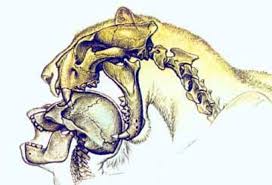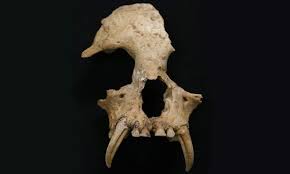The Hunter’s Mark: When a Prehistoric Tiger Hunted Early Humans

In a chilling twist from the depths of prehistory, scientists have uncovered compelling evidence that Paranthropus robustus, an early human species that lived around 1.5 million years ago, fell victim to a prehistoric tiger’s deadly hunt. Discovered in 1949 inside South Africa’s Swartkrans Cave, the fossilized skull known as Specimen SK-54 bears two puncture marks that perfectly match the fangs of an ancient big cat, revealing a haunting narrative of survival that turns the traditional understanding of prehistoric life on its head.

This remarkable find paints a vivid picture of early humanity’s struggle for existence—not as the dominant hunters, but as prey in a world fraught with danger. The adult Paranthropus, with its powerful jaw and robust frame, once roamed the plains of Africa, equipped to forage and defend itself. Yet, even this formidable creature could not escape nature’s fiercest predator. The implications of this discovery are profound, inviting us to reconsider the dynamics of early human life and their interactions with the environment.
As researchers meticulously piece together this ancient crime scene, they uncover a narrative that challenges our perceptions of early hominins. The evidence suggests that Paranthropus robustus, despite its physical prowess, was vulnerable to predation by large carnivores like the prehistoric tiger. This reality highlights the precarious balance of life in a time when survival was a daily struggle against formidable threats.

The puncture marks on the skull tell a story of a violent encounter, a moment frozen in time that speaks to the relentless forces of nature. It prompts questions about the evolutionary pressures faced by early humans: How did these experiences shape their development? What adaptations arose from their need to evade predators?
This discovery also serves as a reminder that long before humans ascended to the top of the food chain, they were just another creature on the menu. The cave, echoing with the silent truth of this ancient encounter, underscores the reality that the history of life on Earth is filled with struggles for dominance and survival.

As scientists continue to analyze the findings from Swartkrans Cave, they unravel not only the history of Paranthropus robustus but also the complex web of life in which it existed. The Hunter’s Mark stands as a testament to the harsh realities of prehistoric life, reminding us that the narrative of human evolution is layered with both triumphs and tribulations. In this intricate tapestry, the echoes of our past resonate, reminding us that the fight for survival has always been at the heart of existence











